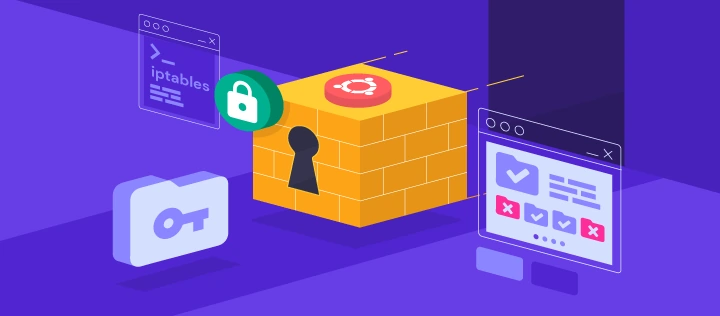Nginx Rate Limit: A Comprehensive Guide
What is Nginx Rate Limiting?
Nginx rate limiting is a powerful feature that allows you to control the amount of traffic your server handles from a single client or IP address. By setting limits on the number of requests a client can make within a specific time frame, you can prevent abuse, protect against DDoS attacks, and ensure fair resource allocation for all users.
Rate limiting is especially useful for:
- Preventing brute-force attacks.
- Mitigating DDoS attacks.
- Ensuring fair usage of resources.
- Protecting APIs from being overwhelmed.
In this guide, we’ll walk you through everything you need to know about Nginx rate limiting, from basic configurations to advanced use cases.
How Does Nginx Rate Limiting Work?
Nginx uses the leaky bucket algorithm to manage rate limiting. This algorithm ensures that requests are processed at a steady rate, even if they arrive in bursts. Here’s how it works:
- Define a Zone: A shared memory zone is created to store the state of requests (e.g., IP addresses and request counts).
- Set a Rate: Specify the maximum number of requests allowed per time unit (e.g., 10 requests per second).
- Enforce Limits: Nginx checks incoming requests against the defined limits and enforces them by either allowing, delaying, or rejecting requests.
Basic Nginx Rate Limiting Configuration
To enable rate limiting in Nginx, you’ll need to modify your Nginx configuration
file (usually located at /etc/nginx/nginx.conf or
/etc/nginx/conf.d/default.conf).
Step 1: Define a Rate Limit Zone
First, create a shared memory zone to store request data. Add the following line
to your http block:
http {
limit_req_zone $binary_remote_addr zone=one:10m rate=10r/s;
}
$binary_remote_addr: Tracks the client’s IP address.zone=one:10m: Creates a shared memory zone namedonewith 10MB of storage.rate=10r/s: Allows 10 requests per second.
Step 2: Apply the Rate Limit
Next, apply the rate limit to a specific location or server block:
server {
location /api/ {
limit_req zone=one burst=5;
}
}
zone=one: Refers to the shared memory zone defined earlier.burst=5: Allows a burst of up to 5 requests beyond the defined rate.
Step 3: Test and Reload Nginx
After making these changes, test your configuration for syntax errors:
sudo nginx -t
If the test is successful, reload Nginx to apply the changes:
sudo systemctl reload nginx
Advanced Nginx Rate Limiting Techniques
1. Handling Burst Traffic
The burst parameter allows you to handle short bursts of traffic. For example,
if you set burst=5, Nginx will queue up to 5 requests beyond the rate limit.
If the queue fills up, additional requests will be rejected.
location /api/ {
limit_req zone=one burst=5;
}
2. Delaying Requests
To delay requests instead of rejecting them, use the nodelay parameter:
location /api/ {
limit_req zone=one burst=5 nodelay;
}
This ensures that requests are processed at a steady rate without overwhelming the server.
3. Rate Limiting by IP and URL
You can combine rate limiting with other variables, such as the requested URL, to create more granular rules:
http {
limit_req_zone $binary_remote_addr$uri zone=two:10m rate=5r/s;
}
server {
location /api/ {
limit_req zone=two burst=10;
}
}
This configuration limits requests to 5 per second per IP address and URL.
Common Use Cases for Nginx Rate Limiting
1. Protecting Login Pages
Prevent brute-force attacks on login pages by limiting the number of login attempts:
location /login {
limit_req zone=one burst=3 nodelay;
}
2. Securing APIs
Protect your APIs from being overwhelmed by excessive requests:
location /api/ {
limit_req zone=one burst=20;
}
3. Mitigating DDoS Attacks
Use rate limiting to reduce the impact of DDoS attacks:
http {
limit_req_zone $binary_remote_addr zone=ddos:10m rate=1r/s;
}
server {
location / {
limit_req zone=ddos burst=5;
}
}
Troubleshooting Nginx Rate Limiting
1. Requests Are Being Rejected
If requests are being rejected, check the following:
- Ensure the
burstparameter is set correctly. - Verify that the rate limit zone has enough memory.
2. Rate Limiting Not Working
If rate limiting isn’t working:
- Confirm that the configuration is applied to the correct location or server block.
- Check for syntax errors using
nginx -t.
FAQs About Nginx Rate Limiting
1. What is the difference between rate and burst?
ratedefines the maximum number of requests allowed per time unit.burstallows a temporary increase in the request rate.
2. Can I rate limit by user instead of IP?
Yes, you can use variables like $http_authorization to track users instead of
IP addresses.
3. How do I monitor rate limiting?
Use Nginx logs to monitor rate-limited requests. Look for entries with the 503
status code.
4. Can I disable rate limiting for specific IPs?
Yes, use the limit_req_except directive to exclude certain IPs:
location /api/ {
limit_req zone=one;
limit_req_except 192.168.1.1;
}
Reading further
- 10 Must-Know Bash Scripting Tips and Tricks for Beginners
- Advanced Iptables Firewall Rules
- Understanding AES Encryption Modes: AES-GCM, AES-CBC, AES-CTR
- Top 35 Linux Tips and Tricks
Conclusion
Nginx rate limiting is an essential tool for managing traffic, protecting your server, and ensuring fair resource allocation. By following this guide, you can implement rate limiting in Nginx with confidence, whether you’re securing a login page, protecting an API, or mitigating DDoS attacks.
For more advanced configurations and troubleshooting tips, refer to the official Nginx documentation. Happy rate limiting!
Latest blog posts
Explore the world of programming and cybersecurity through our curated collection of blog posts. From cutting-edge coding trends to the latest cyber threats and defense strategies, we've got you covered.

